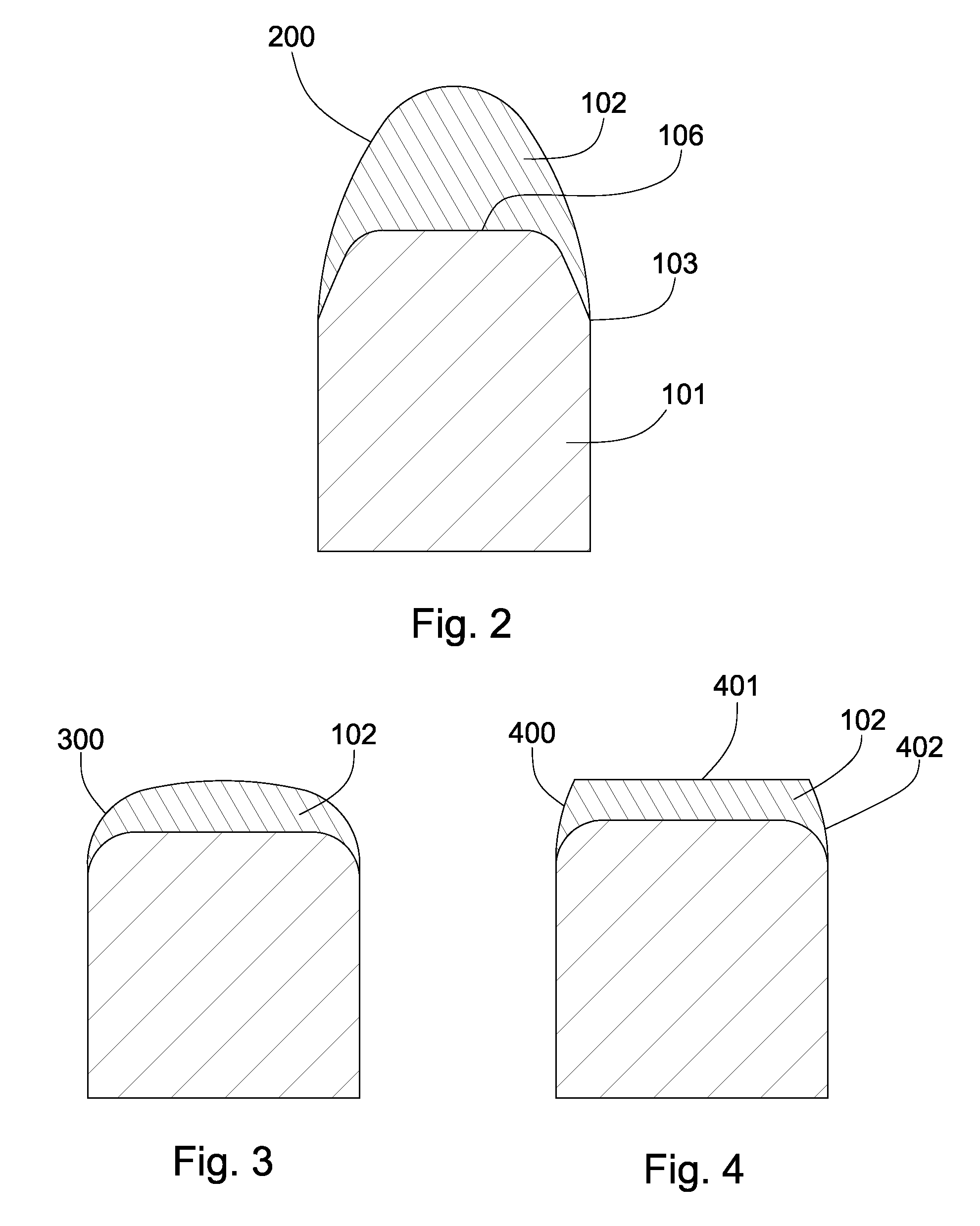Superhard insert with an interface
a cutting element and interface technology, applied in the field of cutting elements or inserts, can solve the problems of reducing or eliminating the efficacy of cutting elements, reducing or eliminating the effect of cutting elements, and often subjecting inserts to intense forces, so as to reduce the effect of failure initiation points, improve bonding, and reduce delamination in ceramic layers
- Summary
- Abstract
- Description
- Claims
- Application Information
AI Technical Summary
Benefits of technology
Problems solved by technology
Method used
Image
Examples
Embodiment Construction
[0026]FIG. 1 discloses a superhard insert 100 comprising a carbide substrate 101 bonded to ceramic layer 102 at an interface 103. In one aspect of the invention the carbide substrate 101 may comprise a generally frusto-conical end 104 at the interface 103 with a tapered portion 105 leading to a flat portion 106 comprised of a material selected from the group consisting of cemented metal-carbide, tungsten carbide, silicon carbide, and titanium carbide. In another aspect of the invention the ceramic layer 102 may comprise of cubic boron nitride or diamond with a hardness of at least 4000 HV which is utilized to improve the overall durability of the insert 100. The central section of the ceramic layer 102 may comprise a first thickness 107 between 0.125 and 0.300 inches immediately over the flat portion 106 of the carbide substrate 101 while the peripheral section of the ceramic layer 102 may comprise a second thickness 108 which is less than the first thickness 107 over the tapered po...
PUM
| Property | Measurement | Unit |
|---|---|---|
| thickness | aaaaa | aaaaa |
| thickness | aaaaa | aaaaa |
| thickness | aaaaa | aaaaa |
Abstract
Description
Claims
Application Information
 Login to View More
Login to View More - R&D
- Intellectual Property
- Life Sciences
- Materials
- Tech Scout
- Unparalleled Data Quality
- Higher Quality Content
- 60% Fewer Hallucinations
Browse by: Latest US Patents, China's latest patents, Technical Efficacy Thesaurus, Application Domain, Technology Topic, Popular Technical Reports.
© 2025 PatSnap. All rights reserved.Legal|Privacy policy|Modern Slavery Act Transparency Statement|Sitemap|About US| Contact US: help@patsnap.com



